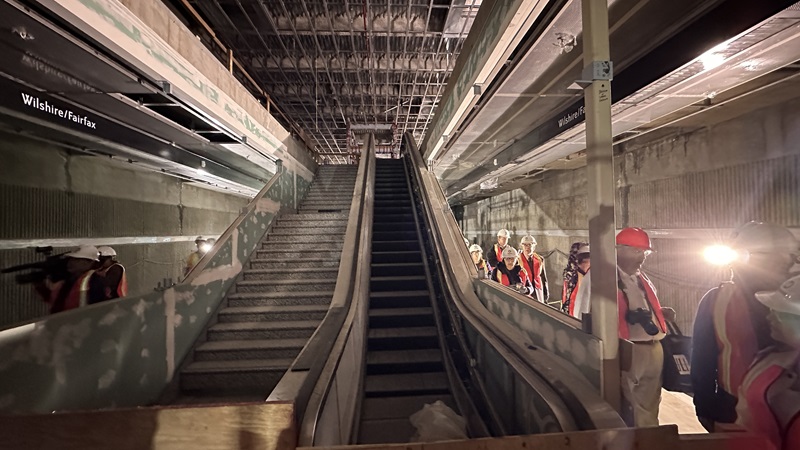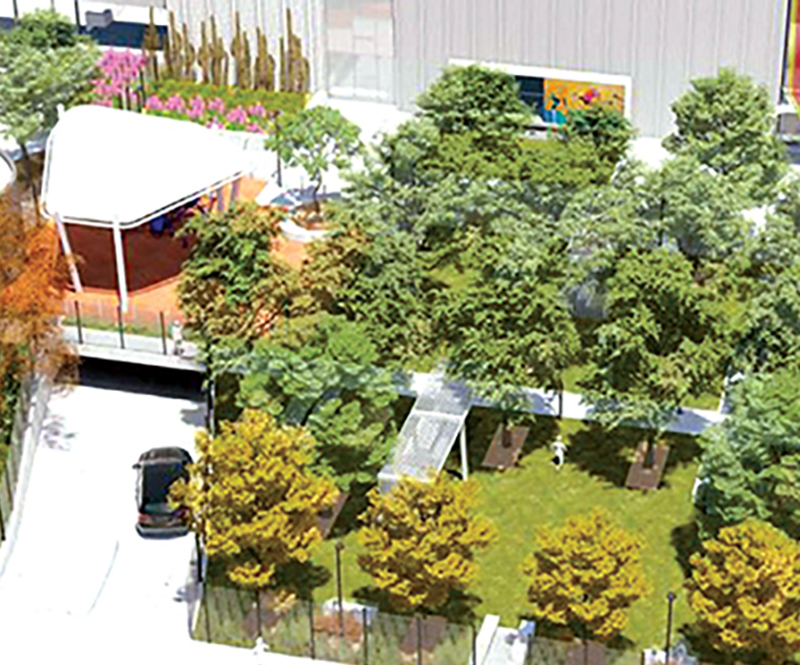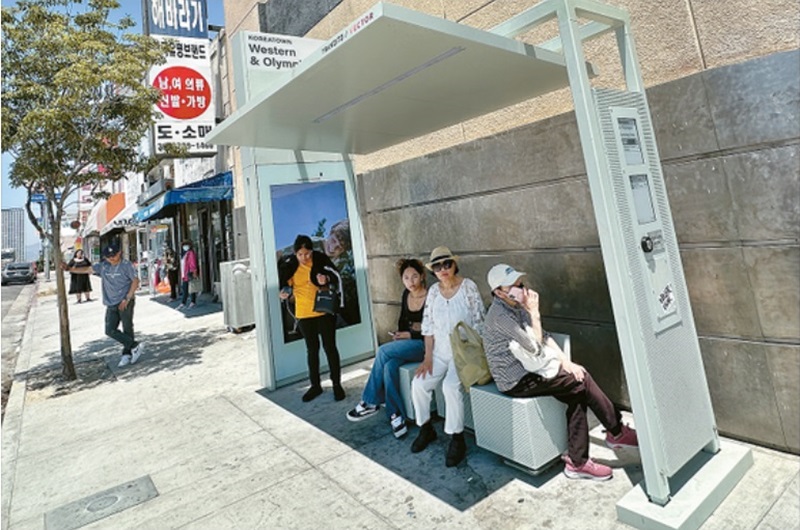[The Korea Daily’s 50th-anniversary special: Part 3]
Los Angeles Koreatown has one of the best geographic locations in the city, with its location being at the center between Downtown, West LA, South LA, and Hollywood. On the other hand, Koreatown has long been struggling with overcrowding and transportation issues. The future success of Koreatown depends on the improvement of the residential environment, including transportation, green space, and security. Here are the problems and solutions pointed out by residents and nonprofits of Koreatown. -Ed.
Improving transit
According to the 2020 Federal Census Bureau statistics, Koreatown is the most densely populated neighborhood in LA. With 39,632 people per square mile, the density is more than double that of Downtown, Central City & Boyle Heights, and Mid-Wilshire.
The 10th District, which oversees Koreatown, and the Mayor’s Office have announced plans to improve public transportation and public facilities in the area. The city plans to focus on building eco-friendly streets and public transportation systems in anticipation of a denser population due to the increased reconstruction of apartments in Koreatown.

According to the city, the transit improvement projects include completing the third section of the D-Line (formerly Purple Line) extension project by 2027, expanding bus and bike lanes, and installing shades at bus stops.
The Mayor’s Office said about Koreatown’s master plan that “Koreatown ranks high on the list of priorities, including bus ridership, heat exposure, transit dependency, access to key facilities, and bus wait times. We will continue to expand the number of new bus stops in Koreatown.”
Establishing green space
The 10th District Councilmember’s Office and the Mayor’s Office have both recognized the need to improve the lack of parks in Koreatown. At the same time, they promised to secure and deploy the necessary budget for green space creation.
“We recognize that green space is essential to revitalizing Koreatown and improving the quality of life for residents,” the Mayor’s Office said, ”and we will explore grants and funding opportunities in addition to the Pio Pico Library pocket park, which recently broke ground.”

According to the Mayor’s Office, the city plans to continue its work to transform underutilized land in Koreatown into community gardens and green spaces. The city will also prioritize the Community School Parks program in Koreatown to make public school playgrounds available to residents after school.
Shawn Kuk, Director of Community Development and Planning at the Koreatown Youth and Community Center (KYCC), said, “Since 1992, KYCC has planted more than 1,000 trees in Koreatown, but according to a 2016 LA County report, Koreatown has the worst green space ratio per 1,000 residents. An environmental improvement can only be ensured if there is a functioning system to properly administer the community redevelopment funds raised from taxes collected in Koreatown.”
Increasing policing
A general consensus regarding Koreatown is that enhanced policing should be a top priority if Koreatown is to become LA’s leading residential and commercial neighborhood.
“Even if we have environmentally friendly public transportation and green spaces, people won’t come to Koreatown if we can’t ensure public safety here,” said James An, President of the Korean American Federation of Los Angeles (KAFLA). “There are too many people doing drugs on the street around bus stops and subway stations. Homelessness must also be addressed to improve public safety and livability.”

According to a survey conducted by the Korea Daily which asked 56 students from the nonprofit youth organization Hwarang Youth Foundation and student journalists of the Korea Daily about the future of Koreatown, Korean American teenagers had similar concerns.
When asked about their biggest dissatisfaction with Koreatown, the top two responses were both related to public safety. Homelessness was the most common response with 36% of respondents. This was followed by 30.4% who said public safety needs improvement.
With the recent surge in homelessness, business burglaries, and street robberies in broad daylight, the younger generation also cited safety as an issue that needs to be addressed.
Emily Lee, 15, said, “I hope Koreatown addresses its homelessness and ensure that it is a safe place for everyone to walk around and go about their day-to-day lives.”
BY HYOUNGJAE KIM, HOONSIK WOO [woo.hoonsik@koreadaily.com]

![Clovine accelerates global expansion in collaboration platform market Website of Clovine, a cloud-based project management provider [Screenshot]](https://www.koreadailyus.com/wp-content/uploads/2025/04/0403-clovine-100x70.jpg)

![Hangar images indicate North Korean advances in military drone domain Satellite photos taken on March 28, included in Beyond Parallel's report on North Korea, shows what appears to be seven new drone hangars at the Banghyon Air Base. [SCREEN CATPURE]](https://www.koreadailyus.com/wp-content/uploads/2025/04/0402-Hangar-100x70.jpg)
